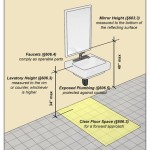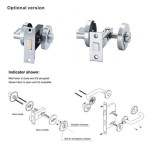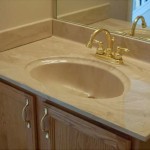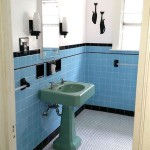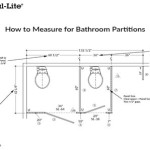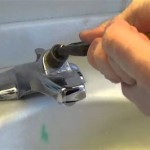How Do You Fix Bathroom Floor Tiles That Are Loose?
Loose bathroom floor tiles present aesthetic and functional challenges. Addressing this issue promptly prevents further damage, potential hazards like tripping, and costly repairs down the line. The process involves careful assessment, appropriate material selection, and precise execution. This article outlines the necessary steps for effectively repairing loose bathroom floor tiles.
Assessing the Damage and Identifying the Cause
Before initiating any repair work, a comprehensive assessment of the situation is crucial. This involves identifying the extent of the problem – how many tiles are loose, and how loosely are they attached? Is the grout around the affected tiles cracked or missing? This information will inform the repair strategy. The assessment should also include identifying the underlying cause of the loose tiles.
Several factors contribute to loose bathroom floor tiles. One common cause is moisture intrusion. Bathrooms are inherently damp environments, and if the waterproofing membrane beneath the tiles is compromised, water can seep through, weakening the adhesive bond between the tile and the subfloor. This is especially prevalent around showers, bathtubs, and toilets. The constant presence of moisture deteriorates the adhesive, leading to tile loosening and eventual detachment.
Another frequent culprit is inadequate subfloor preparation. The subfloor, the surface upon which the tiles are laid, must be clean, level, and structurally sound. If the subfloor is uneven, cracked, or contaminated with dust, debris, or old adhesive, the tile adhesive will not bond properly. This results in weak adhesion and consequently, loose tiles. Over time, the constant pressure and movement on the tiles will exacerbate the problem, leading to more significant detachment.
The type of adhesive used also plays a critical role. Selecting an inappropriate adhesive for the type of tile and subfloor can lead to bond failure. Different types of tiles, such as ceramic, porcelain, or natural stone, require specific adhesives formulated for their properties. Similarly, different subfloor materials, like concrete or plywood, demand compatible adhesives. Using the wrong adhesive will result in a weak bond that is susceptible to moisture and stress, leading to loose tiles.
Furthermore, improper installation techniques can contribute to loose tiles. Applying insufficient adhesive, failing to achieve proper coverage, or using incorrect trowel sizes can all compromise the bond. The adhesive must be evenly distributed across the back of the tile and make full contact with the subfloor. A lack of proper coverage creates weak spots, making the tile vulnerable to loosening. Rushing the installation process or neglecting to follow manufacturer's instructions can increase the likelihood of problems later on.
Finally, structural movement in the building itself can also cause tiles to loosen. This is more common in older homes or buildings with unstable foundations. Minor shifts and settling can exert stress on the tile installation, breaking the bond between the tile and the subfloor. In such cases, simply re-adhering the tiles may only provide a temporary solution; addressing the underlying structural issue is necessary to prevent recurring problems.
Gathering Necessary Tools and Materials
Once the cause of the loose tiles has been determined and the extent of the damage assessed, the next step involves gathering the necessary tools and materials. Having everything readily available will streamline the repair process and minimize interruptions. The specific tools and materials required will vary depending on the nature of the repair, but a basic list includes:
Safety Gear:
Safety glasses are essential to protect eyes from dust and debris. Work gloves will protect hands from sharp edges and chemicals. A dust mask or respirator is recommended to avoid inhaling dust particles, especially when removing old grout or adhesive.Tile Removal Tools:
A grout removal tool, such as a grout saw or a rotary tool with a grout removal bit, will be needed to carefully remove the grout surrounding the loose tiles. A putty knife or a small chisel can be used to gently pry up the tiles. A heat gun can sometimes soften stubborn adhesive, making tile removal easier.Cleaning Supplies:
A vacuum cleaner is essential for removing dust and debris from the subfloor after the tiles are removed. A scraper can be used to remove any remaining adhesive residue. A clean sponge and bucket of water will be needed for cleaning the tiles and the surrounding area.Adhesive and Grout:
Select a high-quality tile adhesive that is suitable for the type of tile and subfloor. Thin-set mortar is a common choice for most tile installations. Choose a grout that matches the existing grout in color and texture. Consider using a waterproof or epoxy grout in high-moisture areas like showers.Application Tools:
A notched trowel is used to apply the adhesive evenly to the subfloor. The size of the notches will depend on the size and type of tile being used. A rubber grout float is used to apply and smooth the grout. A grout sponge is used to clean excess grout from the tile surface.Leveling and Spacing Tools:
Tile spacers ensure consistent grout lines. A level is used to ensure that the tiles are properly aligned and level with the surrounding tiles. Shims can be used to support tiles that are slightly below the surrounding level.Miscellaneous Supplies:
A utility knife is useful for cutting adhesive tubes and other materials. Duct tape or painter's tape can be used to secure tiles in place while the adhesive dries. A mixing bucket and mixing stick are needed for preparing the adhesive and grout.The selection of appropriate materials is crucial for a successful repair. Using low-quality materials or the wrong type of adhesive can lead to premature failure and the need for repeat repairs. Consult with a tile professional or a knowledgeable salesperson at a home improvement store to ensure that the chosen materials are suitable for the specific application.
The Repair Process: Re-adhering Loose Tiles
With the damage assessed and the necessary tools and materials gathered, the process of re-adhering the loose tiles can begin. This process requires patience and attention to detail to ensure a long-lasting and aesthetically pleasing result. The steps outlined below provide a comprehensive guide:
Removing the Loose Tiles:
Begin by carefully removing the grout surrounding the loose tiles using a grout removal tool. Take care not to damage the surrounding tiles. Once the grout is removed, gently pry up the loose tiles using a putty knife or a small chisel. If the tiles are firmly attached, use a heat gun to soften the adhesive before attempting to pry them up. Be extremely careful not to break the tiles during removal.Preparing the Subfloor:
Once the tiles are removed, thoroughly clean the subfloor. Scrape away any remaining adhesive residue using a scraper. Vacuum up all dust, debris, and loose particles. If the subfloor is damaged or uneven, it may need to be repaired or leveled before proceeding. For small imperfections, a self-leveling compound can be used. For larger cracks or damage, consider consulting a professional.Preparing the Tiles:
Clean the back of the removed tiles to remove any old adhesive or debris. Use a scraper and a wire brush to ensure a clean surface for the new adhesive to bond to. If the tiles are cracked or damaged, they should be replaced with new tiles that match the existing ones as closely as possible.Applying the Adhesive:
Following the manufacturer's instructions, mix the tile adhesive to the correct consistency. Apply the adhesive to the subfloor using a notched trowel, holding the trowel at a 45-degree angle to create ridges in the adhesive. The size of the trowel notches will depend on the size and type of tile being used. Ensure that the adhesive covers the entire area where the tile will be placed.Setting the Tiles:
Carefully place the tiles back into their original positions, pressing down firmly to ensure good contact with the adhesive. Use tile spacers to maintain consistent grout lines between the tiles. Use a level to ensure that the tiles are level with the surrounding tiles. If necessary, use shims to support tiles that are slightly below the surrounding level. Remove any excess adhesive that squeezes out from between the tiles.Curing the Adhesive:
Allow the adhesive to cure according to the manufacturer's instructions. This typically takes 24 to 48 hours. Avoid walking on the tiles or applying any stress to them during the curing process. Duct tape or painter's tape can be used to secure the tiles in place while the adhesive dries, especially for larger or heavier tiles.Grouting the Tiles:
Once the adhesive is fully cured, remove the tile spacers and prepare the grout according to the manufacturer's instructions. Apply the grout to the grout lines using a rubber grout float, pressing the grout firmly into the joints. Remove any excess grout from the tile surface using a grout sponge and a bucket of clean water. Work in small sections and frequently rinse the sponge to prevent grout haze from forming on the tiles.Cleaning and Sealing:
After the grout has dried for the recommended time, typically 24 hours, clean the tiles thoroughly to remove any remaining grout haze. Use a grout haze remover if necessary. Finally, seal the grout lines with a grout sealer to protect them from moisture and stains. Follow the manufacturer's instructions for applying the sealer. Regular cleaning and maintenance will help to prolong the life of the tile installation and prevent future problems.By following these steps carefully, homeowners can effectively repair loose bathroom floor tiles and restore the integrity and appearance of their bathroom flooring. If the problem is extensive or if the underlying cause is structural, it is advisable to consult with a professional tile installer or contractor.

How To Fix A Loose Floor Tile Without Removing It
.png?strip=all)
How To Fix Loose Or Broken Ceramic Floor Tiles

How To Fix Loose Ceramic Floor Tiles Dummies

How To Fix Loose Ceramic Floor Tiles Dummies

How Do I Fix Loose Floor Tiles Espares

How To Fix Loose Ceramic Floor Tiles Dummies

Floor Tiles Repairing Tubes Kits Syringes Fix A

How To Fix Loose Floor Tiles Alliance Flooring Directory

Stickit Tile Repair Kit For Loose Tiles

How To Lay Bathroom Tile 5 Easy Steps Rubi Blog Usa
Related Posts
